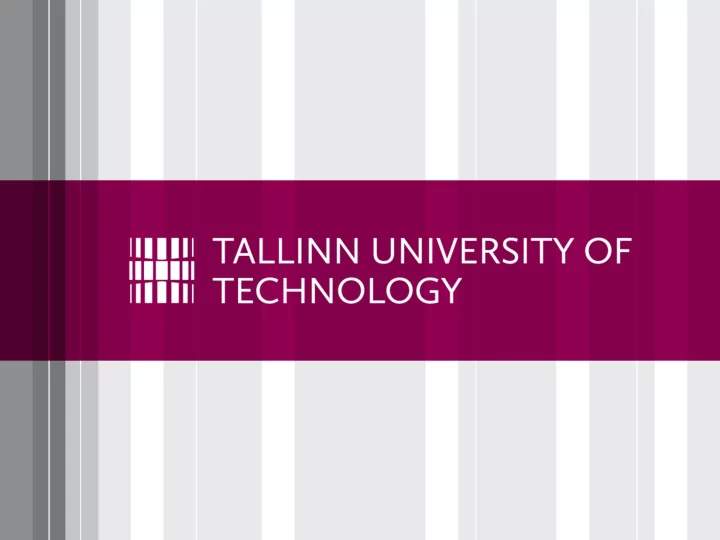

Future Money: Paper or Data? Kuldar Taveter, Professor in Software Engineering, Department of Informatics, Tallinn University of Technology, Estonia
Who am I? n Name: Kuldar Taveter n Position: Professor, Chair of Software Engineering n Education: n Dip.Eng., TUT, 1988 n M.Sc., TUT, 1995 n Ph.D., TUT, 2004 n Work experience: n 1985-1989: Institute of Cybernetics n 1989-1993: Private companies n 1993-1998: Department of Informatics of TUT n 1997-2005: Technical Research Centre of Finland n 2005-2008: The University of Melbourne, Australia n 2008- : Department of Informatics of TUT n Jan-Aug 2011: University of South Carolina, USA n Research areas: Agent-oriented software engineering, engineering of sociotechnical systems, multiagent systems, intelligent systems, ambient intelligence, agent-based simulation
Background • 63% of all monetary transactions in Estonia are conducted by a debit or credit card • Getting rid of paper money? • Mistaken transactions? • Can we trust centralized banking solutions in any country? • 50 million digital signatures are given each year in Estonia
Requirements for money • Durable • Portable • Divisible • Storable • With intrinsic value
Cryptocurrency - Bitcoin • Durable • Portable • Divisible • Storable • With intrinsic value • In addition: ü Homogeneous ü Easily cognizable ü Imperishable ü In practice fully shielded from counterfeiting
Foundations for Bitcoin
Biggest P2P system https://bitcoin.org/bitcoin.pdf
Sending and receiving money (source: Yevgeniy Brikman)
How does Bitcoin work? (Wikipedia)
Blockchain
How is scarcity guaranteed? Collective mining : repeatedly verifying and • collecting newly broadcast transactions into a new group of unlinked transactions called a block Each new block is a cryptographic hash of • the previous block containing a link to the previous block Every approximately 14 days, the difficulty • target is adjusted based on the network's recent performance, with the aim of keeping the average time between new blocks at ten minutes Incentives for mining: • ü Newly created Bitcoins ü Transaction fees
Bitcoin mining farm in Iceland (Wikipedia: "Cryptocurrency Mining Farm" by Marco Krohn - Own work. Licensed under CC BY-SA 4.0 via Commons)
Adding a block by mining (source: Yevgeniy Brikman)
Adding a block by mining (source: Yevgeniy Brikman)
Increase of the mining difficulty (Wikipedia)
Number of Bitcoin transactions per month (Wikipedia)
Smart Contracts and Agents
Pros and Cons of a Cryptocurrency Pros: • ü Intrinsic value is collectively rather than voluntarily assigned ü Anonymity is preserved ü Lower transaction fees ü Repudiation of transactions is not possible ü Supports smart contracts Cons: • ü Requires both parties of the exchange to possess the necessary technology that gives access to Bitcoins or units of other cryptocurrencies ü One may have to wait until the transaction gets registered in a new block ü Requires the acceptance by the governments
Future Money: Paper or Data?
Recommend
More recommend